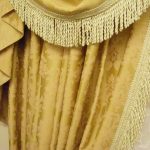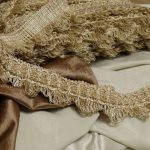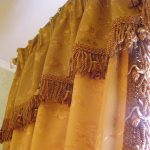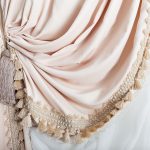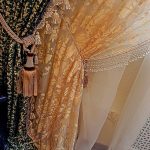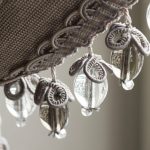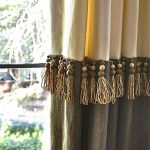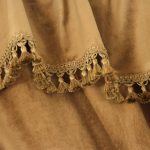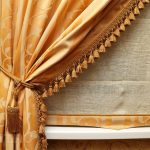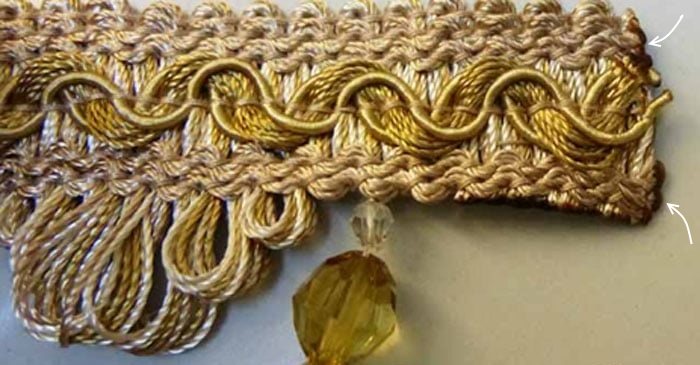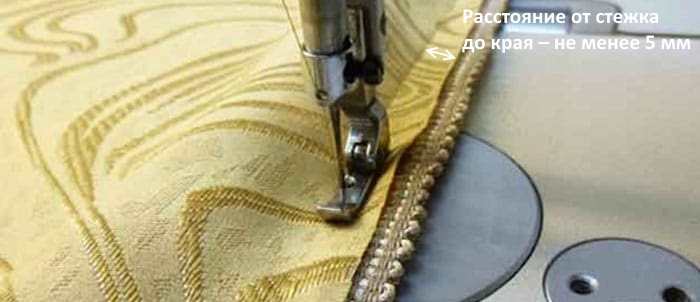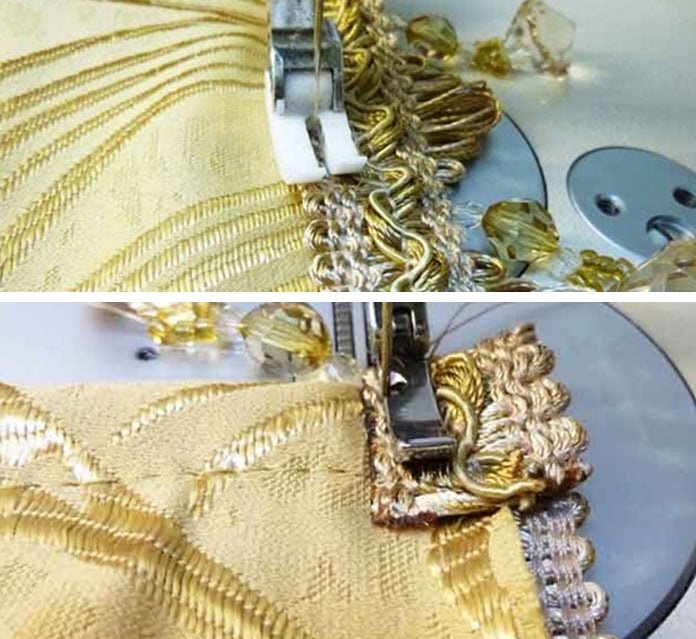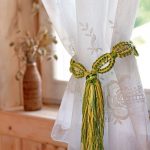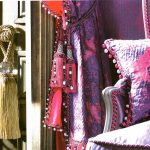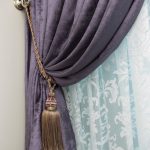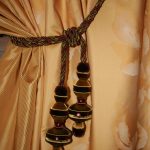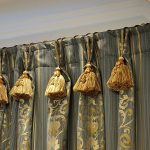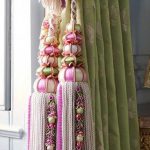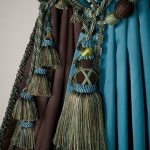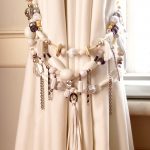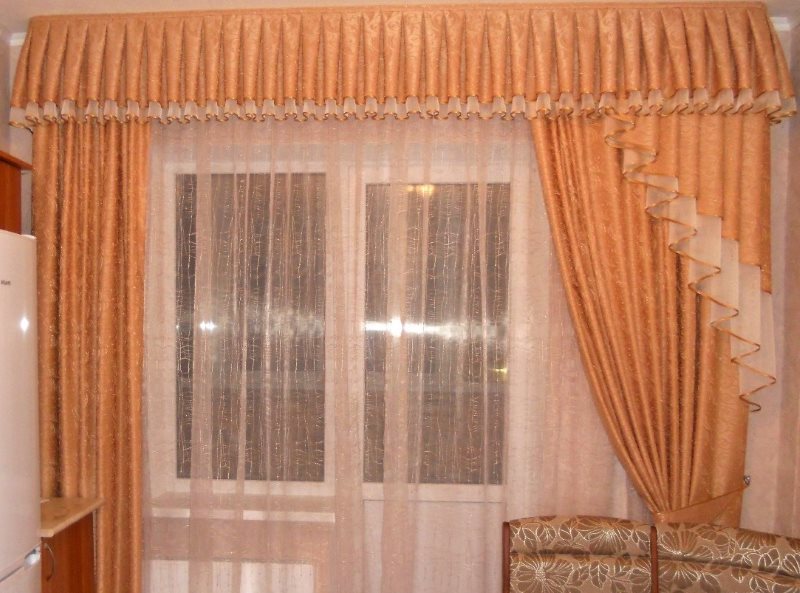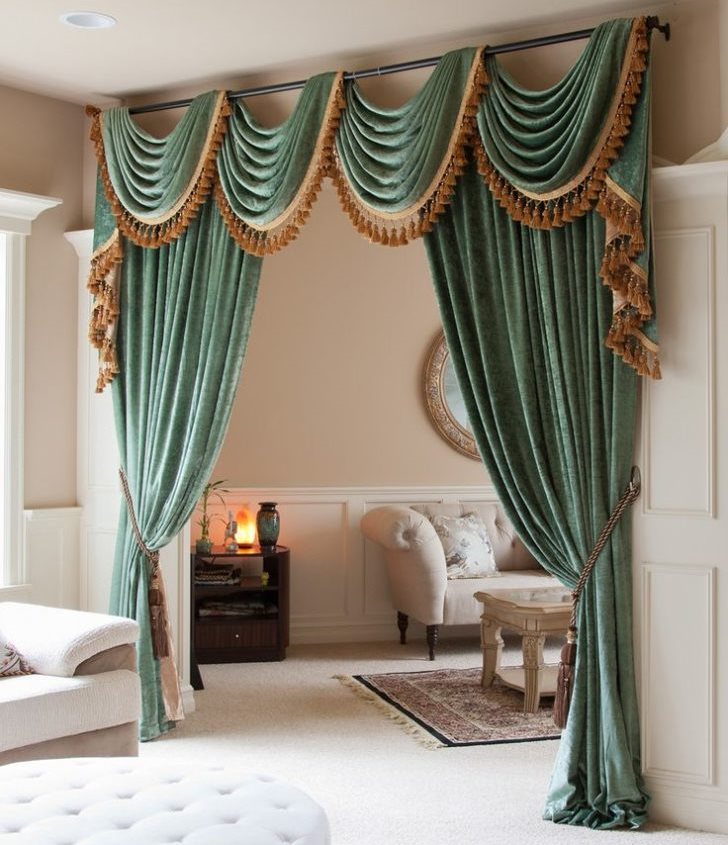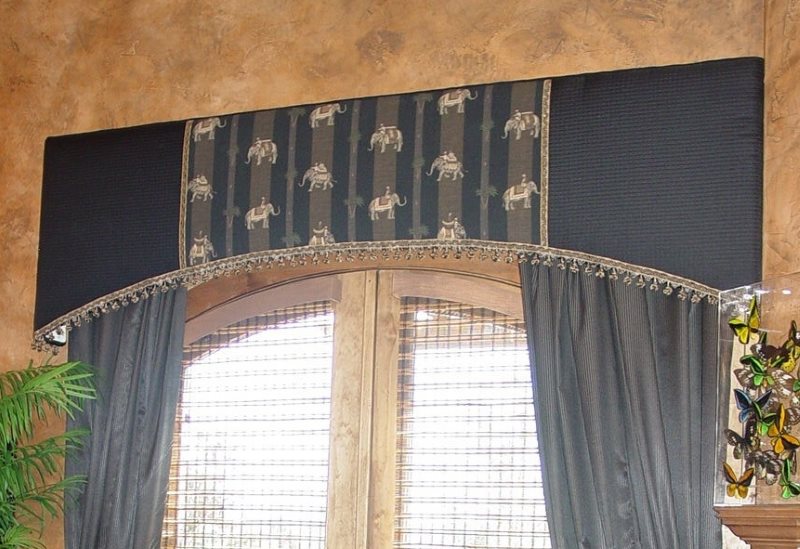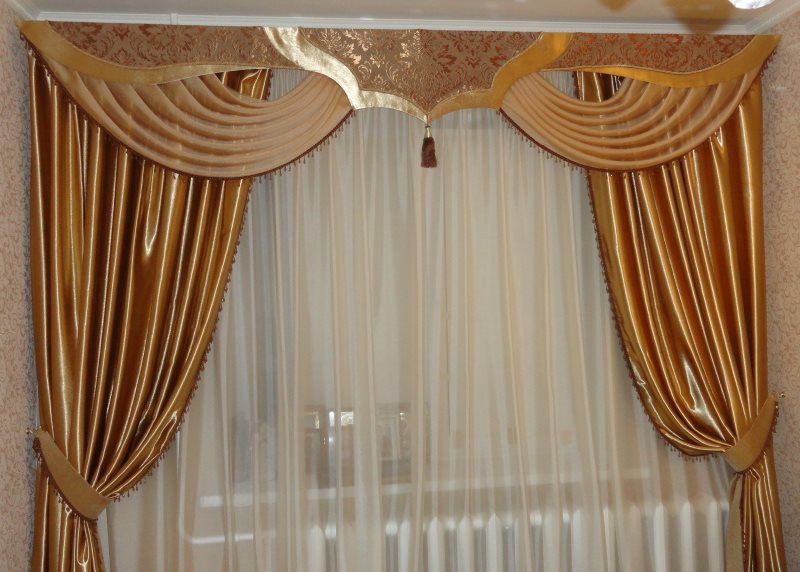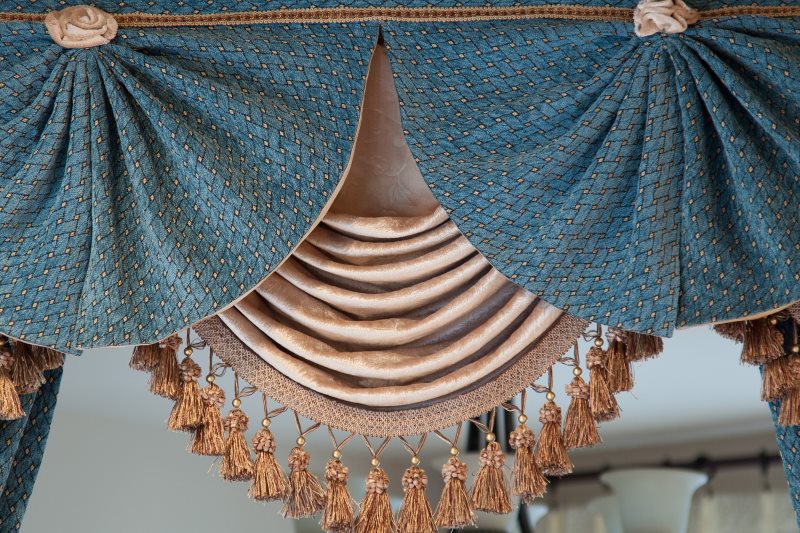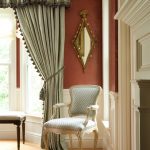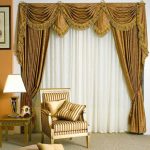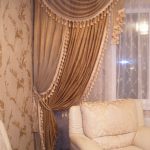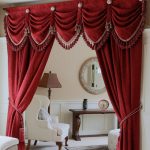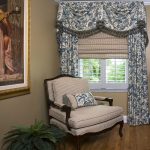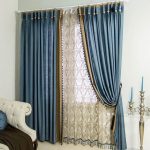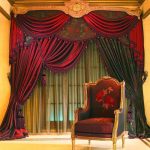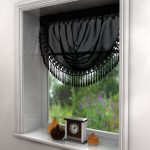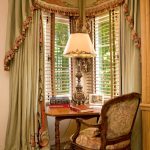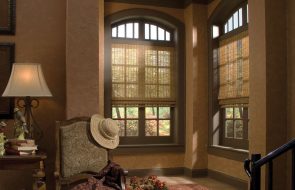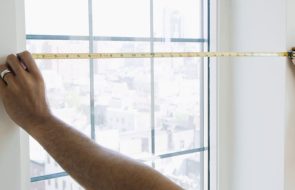Stylish window design will decorate any room. But in order for the living room, bedroom or study to look individual and reflect the inner world of its owner, it is worth thinking about the decor of the curtains themselves.
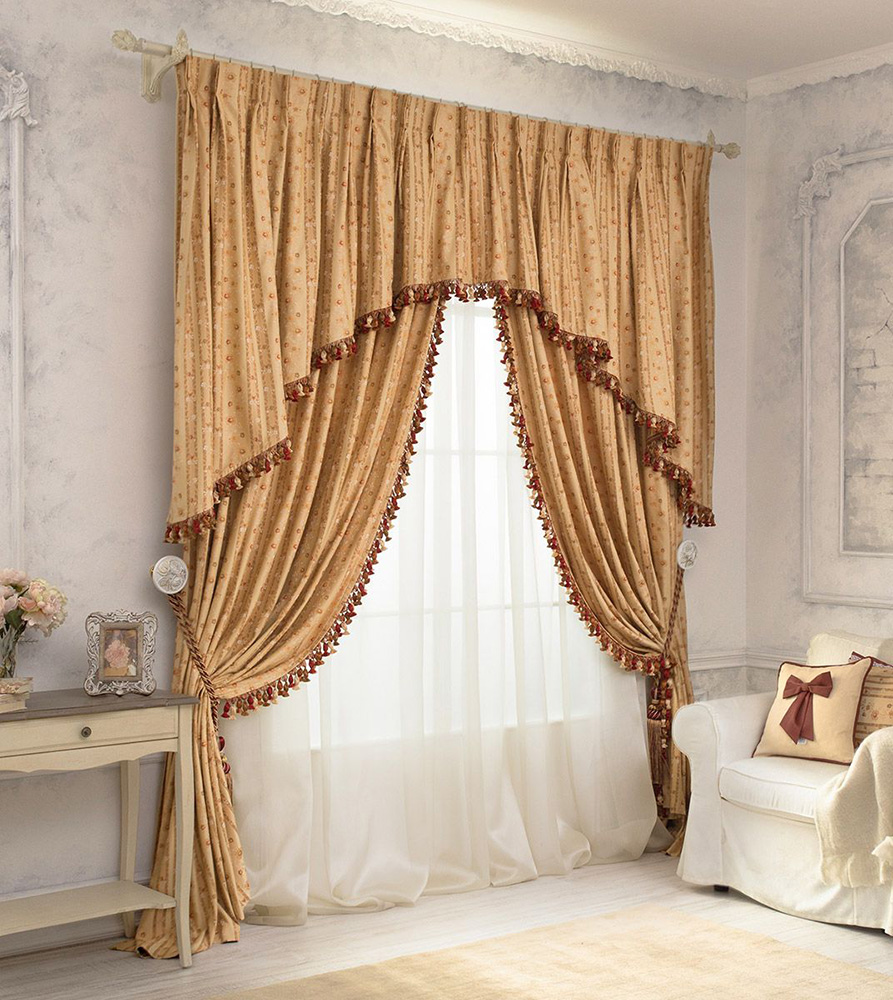
Content
- Curtain decoration: brief description, types of decorations
- Fringe for curtains: description, instructions and diagrams for self-finishing
- Tassels on curtains: examples of interior design
- Lambrequin with fringe for curtains: how to make, instructions for sewing a lambrequin with fringe, photo
- Design options and examples of decorating curtains with fringe and tassels, photos
- Video on how to sew curtains with fringe
Curtain decoration: brief description, types of decorations
Gone are the days when curtains were used only to hide from prying eyes. Today, various curtains, drapes and blinds are used to decorate a house or apartment, as an addition to the overall interior decoration. Therefore, the question of decorating curtains is very, very relevant. With a little imagination and patience, you can get a stunning result. The range of suitable fittings available today (beads, appliques, chains and tassels) will help with this.
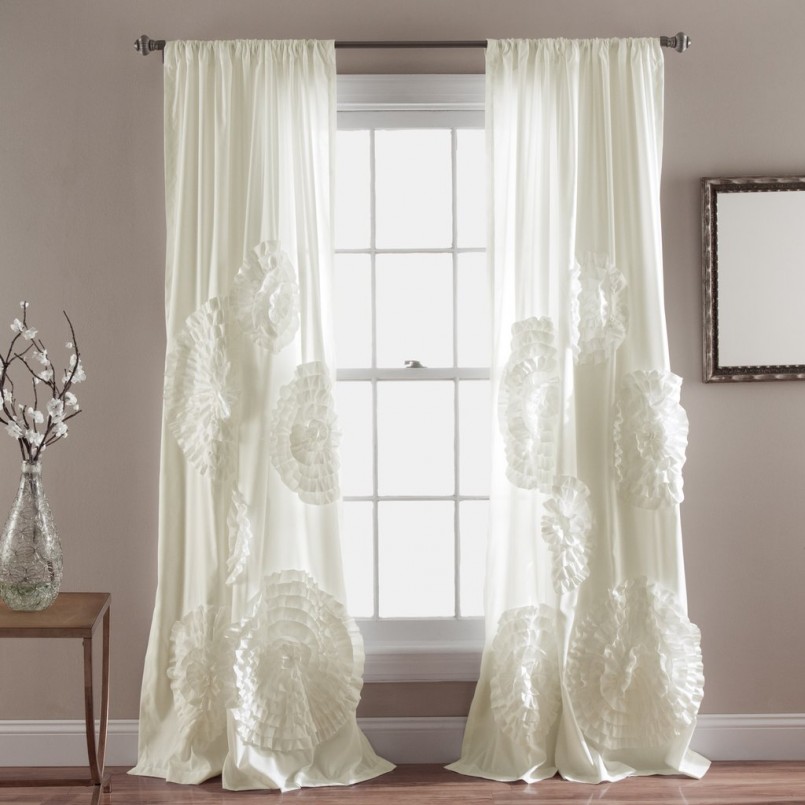
One of the decoration options is a three-dimensional applique on the canvas. It seems that nothing can look more boring than simple white curtains. As you can see in the photo, if desired, they can be turned into a real masterpiece. Large flowers made of the same fabric as the curtain itself can be decorated with imitation pearls or sequins.
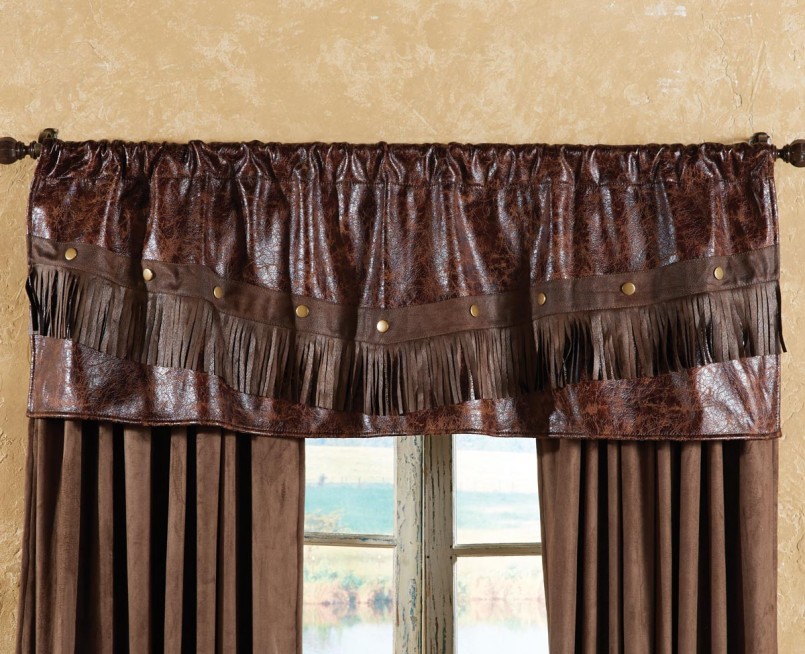
Another example of adding applique to curtains. Combined with metal rivets and made in the right color scheme, this option is appropriate for a country house or cottage.
Jabot is one of the most popular elements for complementing the design of curtains. It is a piece of fabric with a beveled edge, which is placed on the side of the lambrequin. As a rule, jabot is made of fabric of the same color as the curtains. A mandatory condition for jabot is that it should drape well.
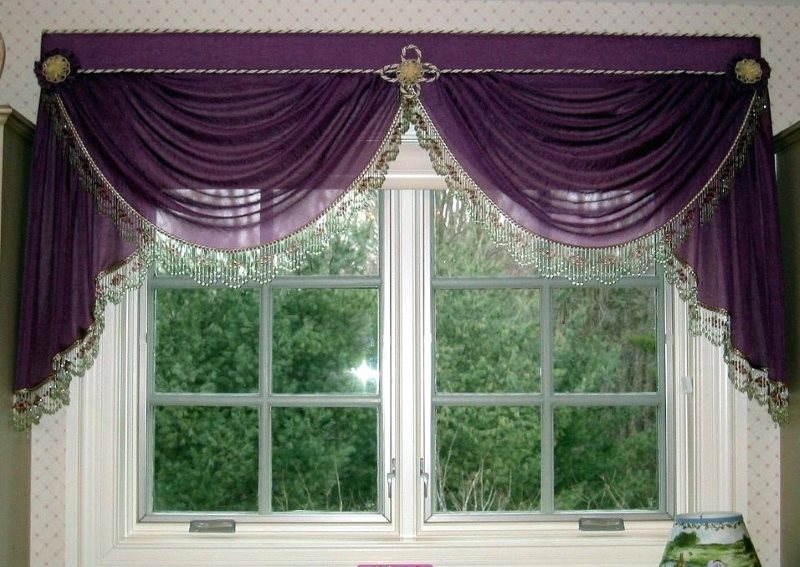
Classic style curtains are decorated with a coquille. This is one of the elements of the lambrequin, which is an insert with vertical drapery. It can contrast with the main structure or be the same color as it. It looks a bit pompous, but is quite appropriate in a room with high ceilings.
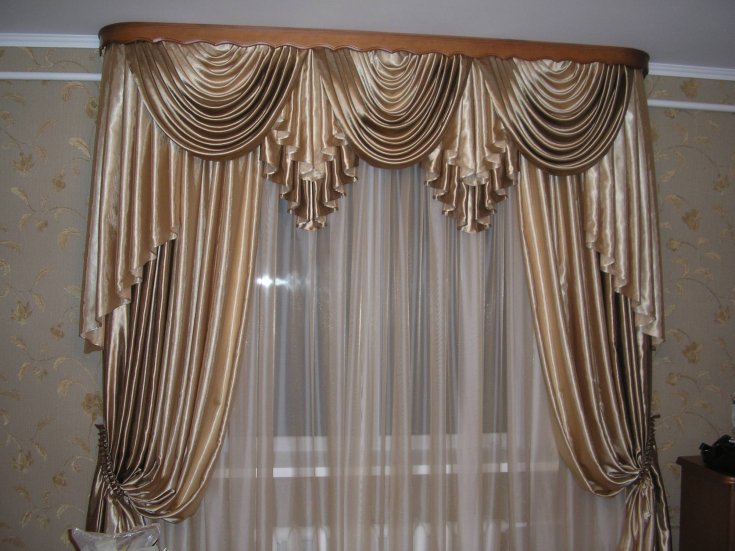
Perhaps the most common and affordable decoration for curtains is a decorative holder. This element can be of different shapes and made of different materials. It can be used for its intended purpose, or exclusively as a decoration (for example, the photo shows holders located on the curtain loops).
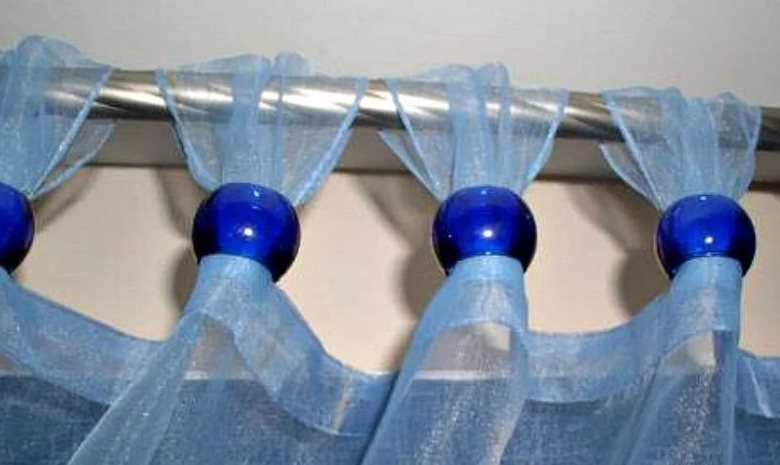
Tassels and fringe also do not lose their relevance, despite the change of times and fashion trends. Although their main stylistic direction is classic, they feel quite comfortable in modern trends.
Fringe for curtains: description, instructions and diagrams for self-finishing
Until relatively recently, fringe was a simple braid with a smooth edge on one side and loose threads on the other. Today, the variety of fringe can be surprising. Not only are there many color options available, but also a range of different configurations and combinations.
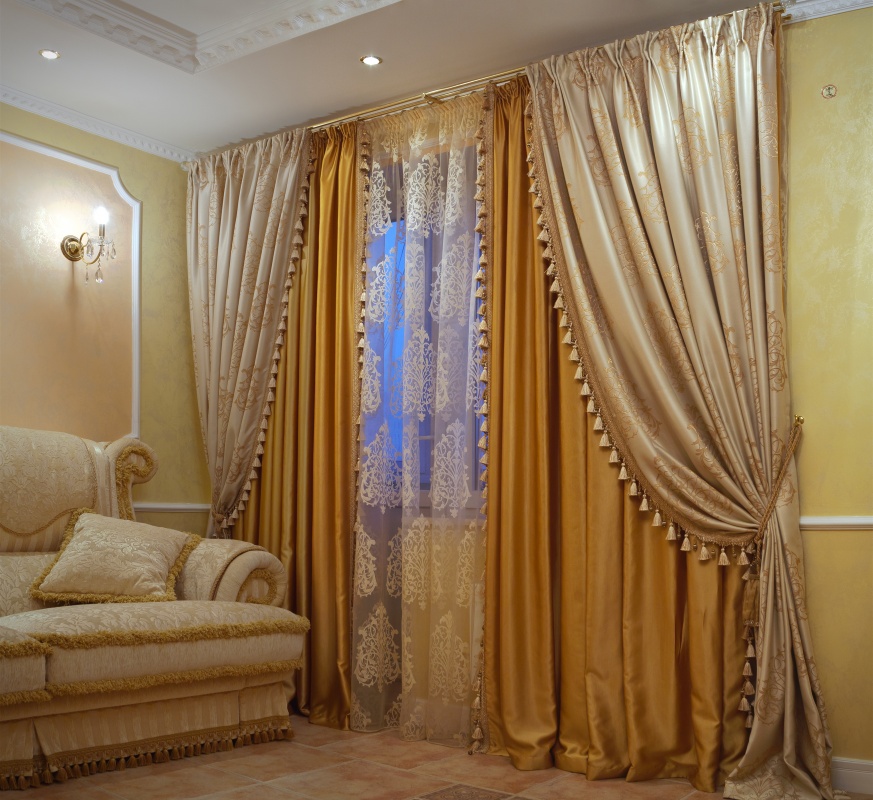
There are four types of fringe:
- cut;
- block;
- tinsel;
- fan-shaped.
Fringe with additions (inserts) made of plastic, wood or bamboo is becoming increasingly popular. Curtains with pompoms are also in demand.
The decor can combine several colors and textures. And so that all this splendor does not look vulgar and rude, it is important to correctly combine the curtain fabric and tape. In this version, it would be appropriate to trim the curtains with a tape with bells.
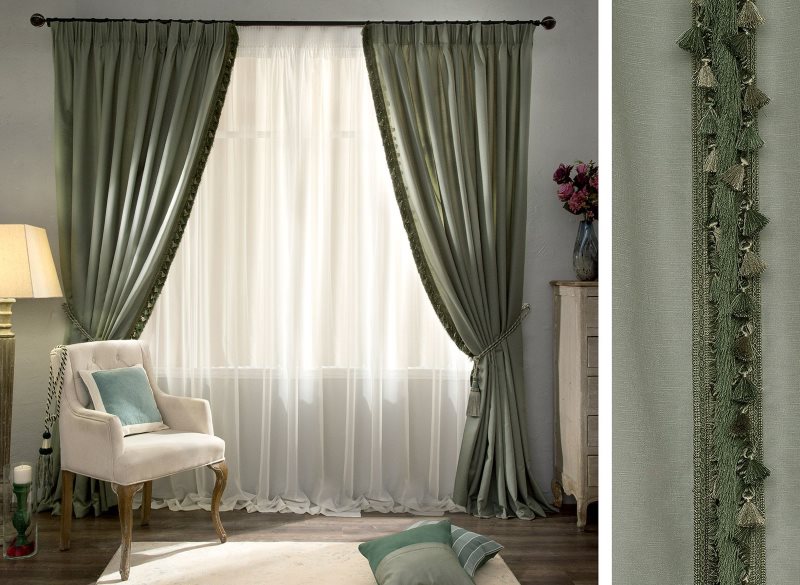
For a heavy fabric, massive fringe will do. And if the curtains are light and airy, then the trim should be weightless.
It only seems that sewing fringe on your own is the easiest task in the world. If you do this work incorrectly, you can hopelessly ruin the curtains. Therefore, you need to be patient and put in maximum effort.
- First, you need to decide where the fringe will be sewn. Usually, this is the bottom edge or the side edge.
- Now we process the edge of the curtain (stitch or burn it).
To prevent the fringe from unraveling after sewing, burn the edges. - Then we place the tape under the fabric (the fabric is placed inside out) and stitch.
If the tape is wide, make two lines, stepping back from the edges - Now we sew a line along the front side of the curtain, along the very top of the tape.
After the front stitch, fold the ends of the fringe to the wrong side and hem with two lines.
A curtain designed in this way will not “wrinkle” or stretch where the fringe is attached.
Important! Fringe is used not only for decorating curtains. It is actively used for finishing pillows and bedspreads, tablecloths, and also for decorating upholstered furniture.
Tassels on curtains: examples of interior design
The golden age of tassels is considered to be the 17th century. It was then that this element began to be used for interior design and for decorating clothes, shoes and accessories. Today, tassels are getting their second birth, and if they are not used so often in clothes, then they are more than in demand for decorating curtains.
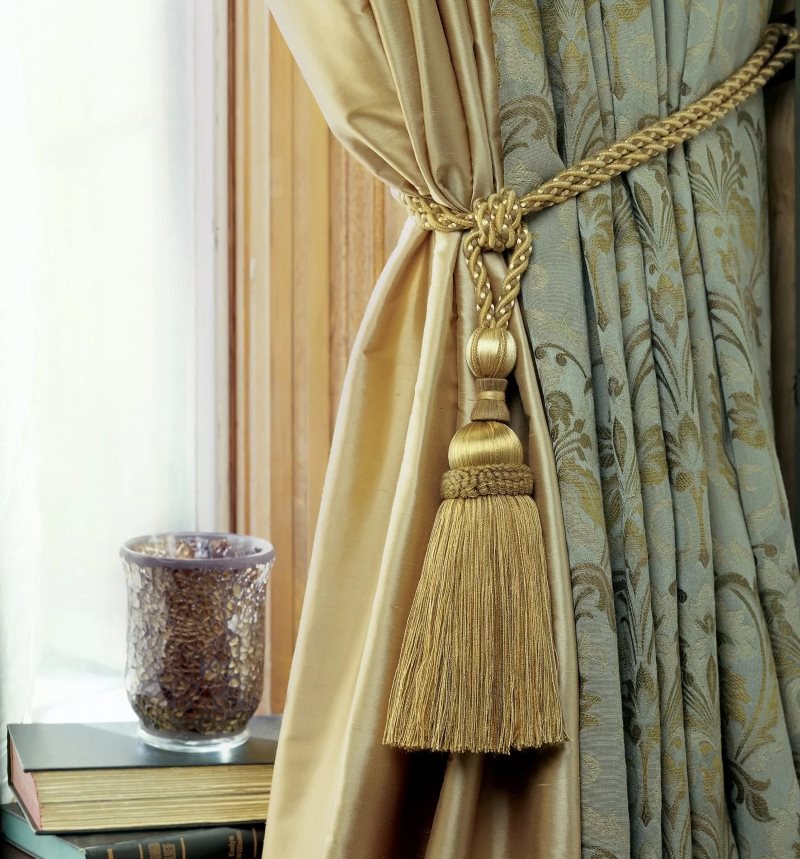
Most often, this element is used to decorate lambrequins or curtain holders. They can be made of natural or synthetic threads, complemented with beads and chains, and decorated with fabric.
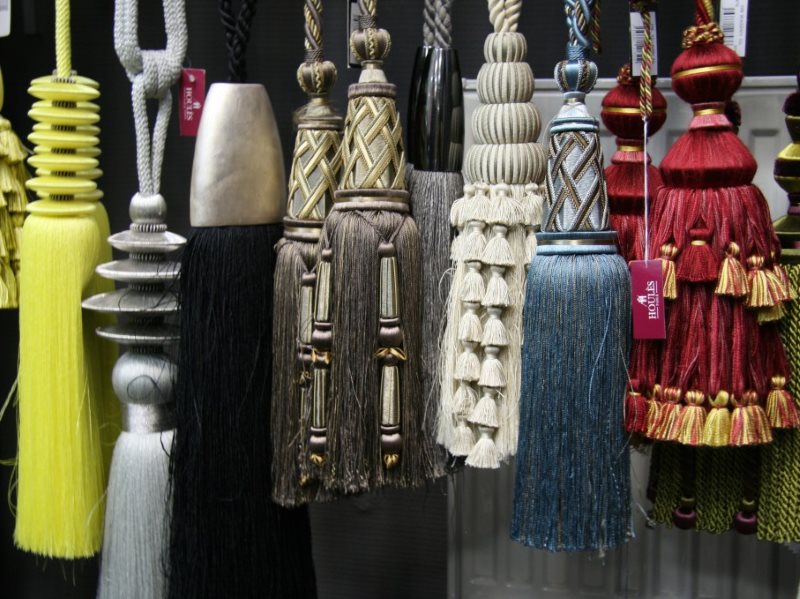
The color scheme may vary:
- the same shade as the canvas;
- obvious contrast.
Even the simplest curtains will look luxurious if they are complemented with tassels of the right color scheme.
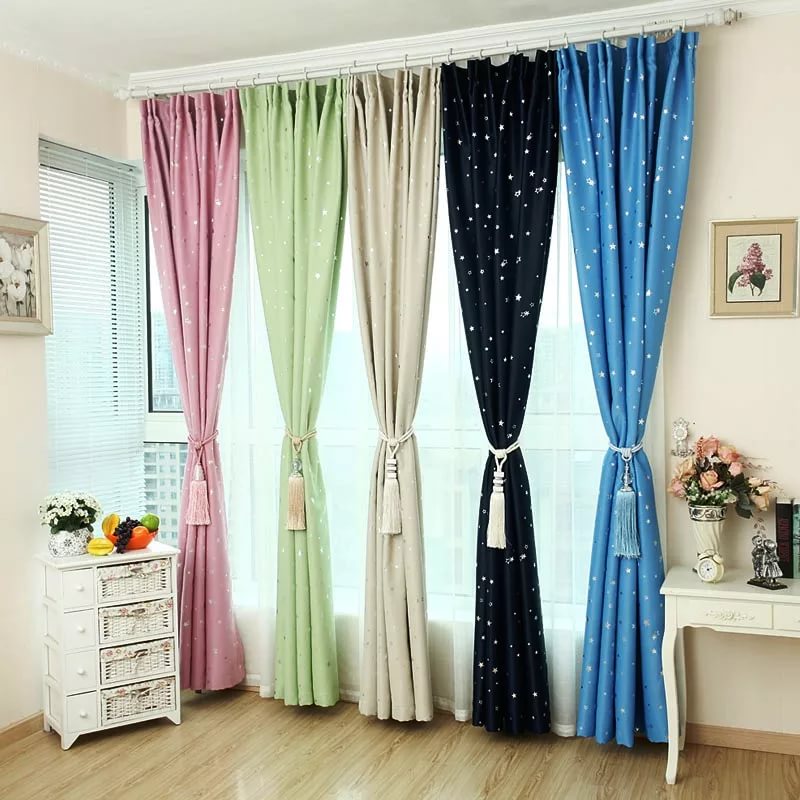
Even Roman blinds, which look quite self-sufficient, are decorated with tassels. This makes the room stylish and very cozy. Such decor will be appropriate not only for a kitchen window (photo), but also for a nursery or bedroom.
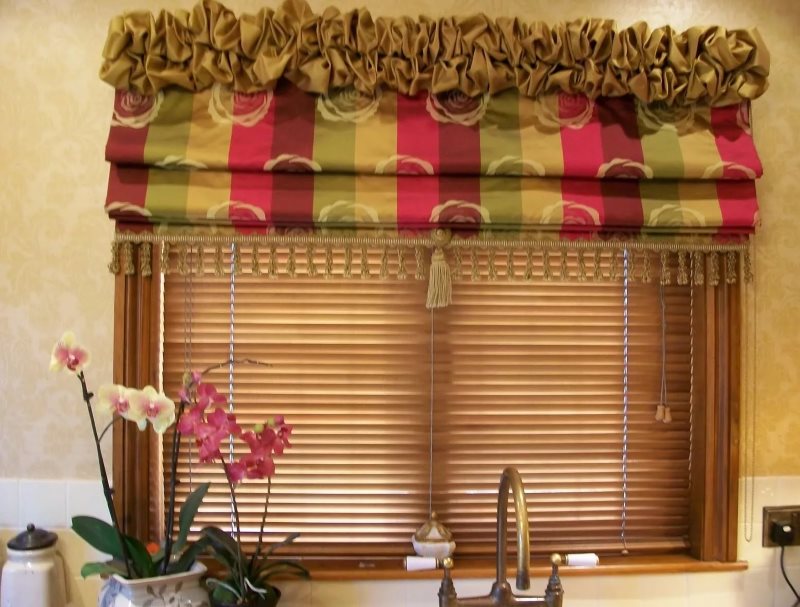
Brushes are used as holders in different ways:
- Two different cords, decorated with tassels, wrap around the canvas and are connected to each other with a knot.
- Macrame. Delicate weaving is appropriate for both light tulle and textured curtains.
- Asymmetrical "catch" of curtains visually increases the space. One panel is fixed at the level of the window sill, and the second one is higher.
There are several ways to attach tassels to curtains. They can be attached to the main curtain fabric. Alternatively, they can be sewn along the entire perimeter of the curtain. Finally, this element is attached to the cords that will support the fabric. To complete the interior, the same tassels can be sewn to sofa cushions or a bedspread.
Lambrequin with fringe for curtains: how to make, instructions for sewing a lambrequin with fringe, photo
Lambrequin is one of the most popular elements for window decoration. Thanks to it, the curtain structure gets a finished and elegant look. And if initially it was created to hide the place where the curtains are attached to the cornice, today it is a completely independent decorative detail of the structure.
Lambrequin can be of different types and shapes:
- Simple. A piece of fabric attached to a curtain tape.
Simple lambrequin with gathering on curtain tape - Soft. The fabric for this should be lighter and drape well.
Soft lambrequin on the doorway - Rigid. A special frame is covered with curtain fabric.
Rigid lambrequin on a plywood frame - Combined.
Combined lambrequin with decorative gilding - Fan or shell.
Lambrequin fan with decorative tassels
Almost every type of lambrequin is decorated with fringe or tassels.
Only an experienced craftswoman can make a lambrequin with her own hands. This work requires certain skills, perseverance and careful observance of all specified proportions and sizes. Since the structure is multi-layered, each element should complement the composition, and not "argue" with it, standing out against the general background.
This is what an approximate lambrequin scheme for a standard window looks like. One of the most popular options has been chosen.
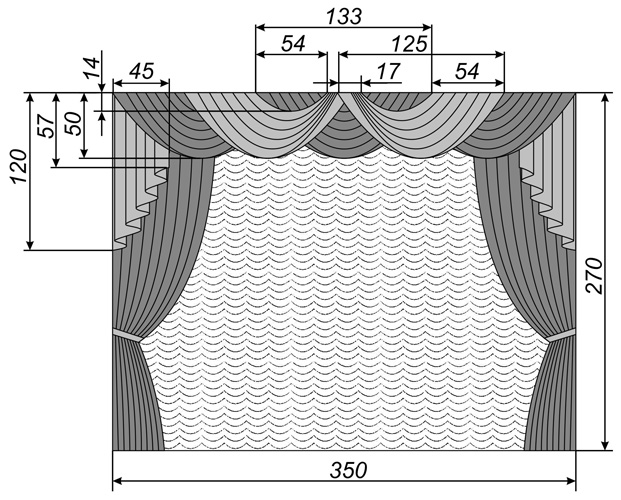
Before you start working, you need to calculate the required amount of fabric. The length and width of the fabric should be selected taking into account seam allowances.
To make swag, a rectangular fabric is taken, marks are made on it to create drapery, then the resulting folds are secured with stitches.
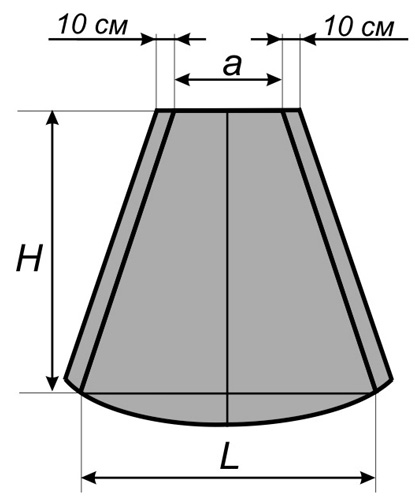
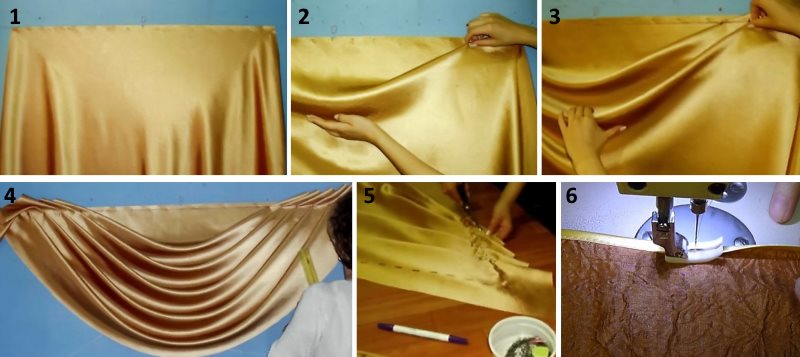
Having made all the swags, they are attached to a special curtain tape. When the upper part of the lambrequin is ready, the tie is formed - the side part. It can be one-sided or two-sided, be located only on the sides or decorate the central part of the structure - there are enough options.
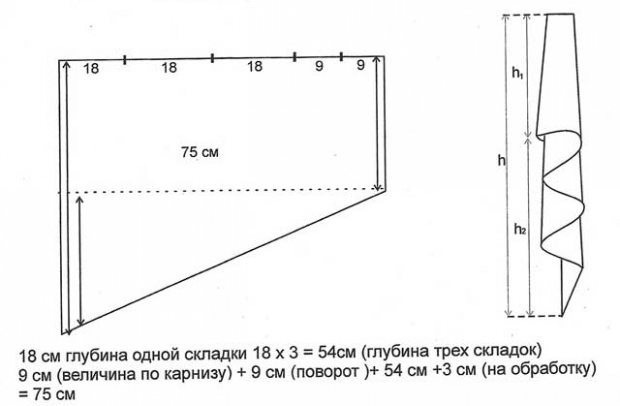
When all the details are ready, they are also fixed to the curtain tape with a stitch. Usually, the final stage of creating a lambrequin is finishing with fringe or tassels.
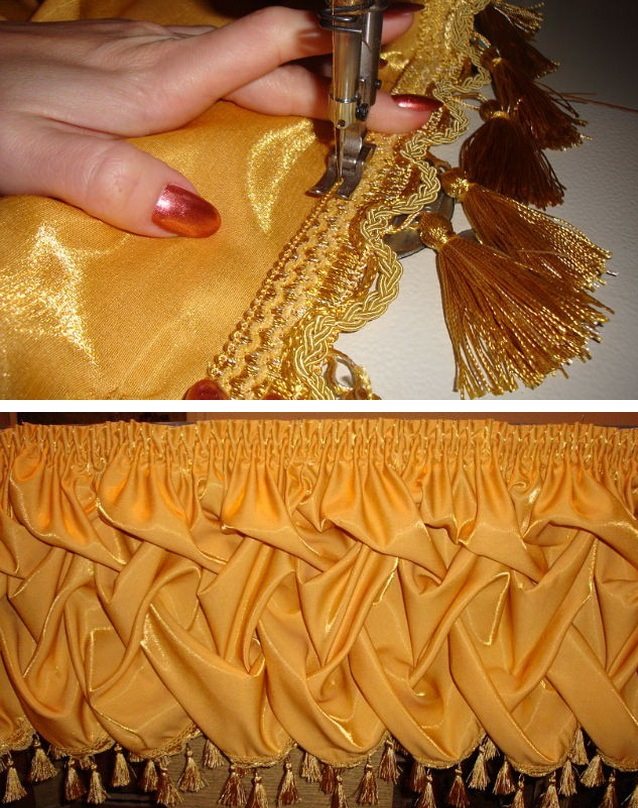
Design options and examples of decorating curtains with fringe and tassels, photos
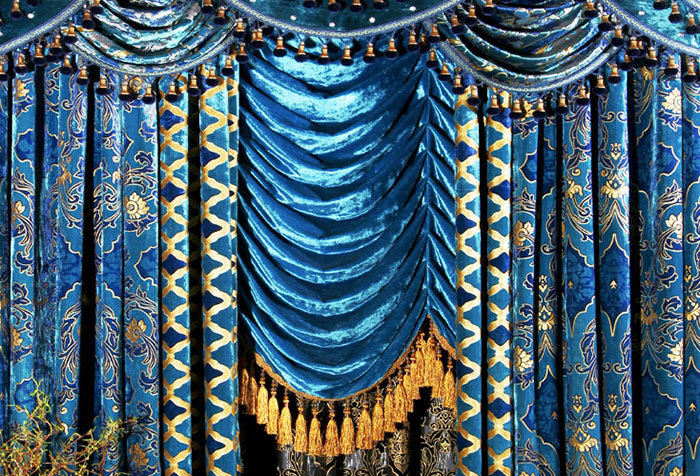
Velvet curtains of blue color are harmoniously complemented by golden braid with small tassels and decorated with large tassels. The combination of blue and gold gives the interior an official and solemn look, and the tassels emphasize the sophistication of the classic style.
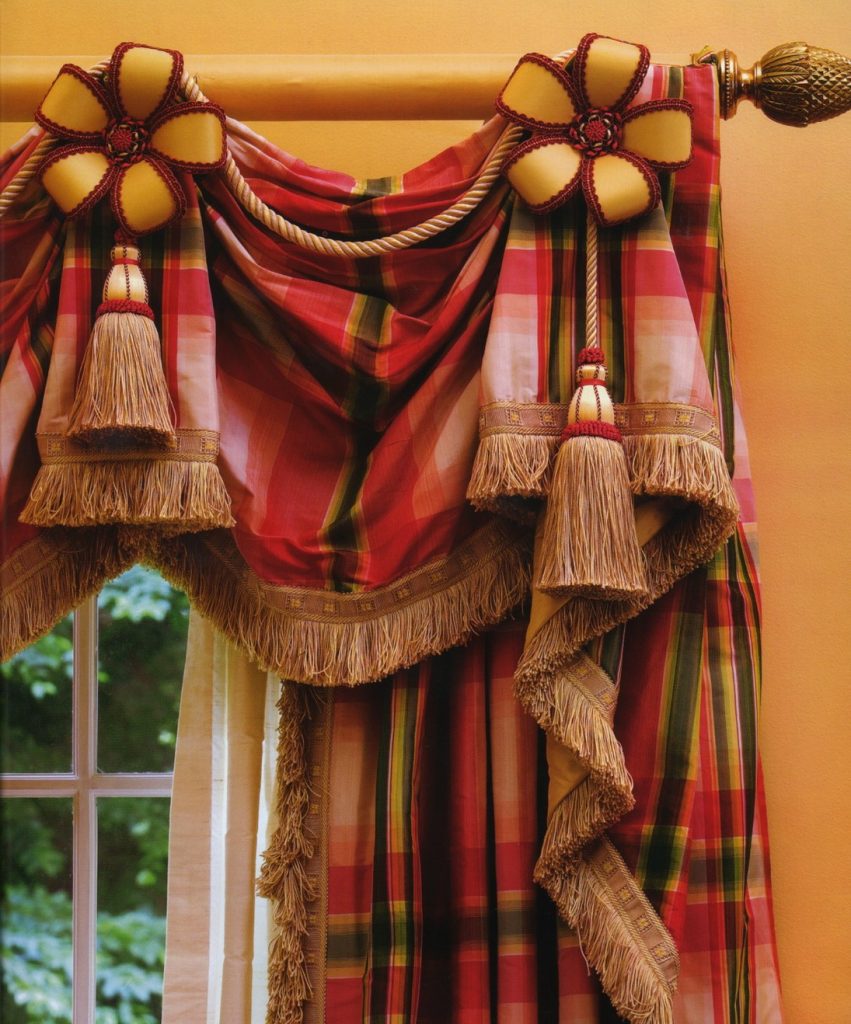
In this case, a bold color scheme and combination were chosen. In the photo, checkered curtains, decorated with loops of voluminous flowers, are complemented by fringe and tassels made of the same material. The cornice matches the color of the overall interior.
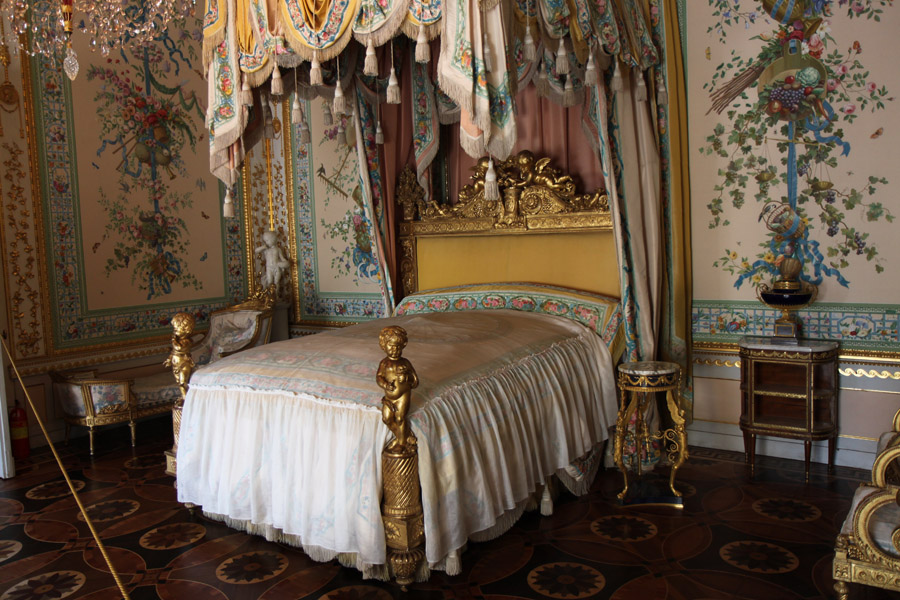
When preference is given to a variety of voluminous tassels, it is important to choose the right curtain fabric and interior decoration. The same tassels should be on furniture and accessories: pillows, bedspreads.
Tassels and fringe are real masterpieces of interior art. They can decorate curtains in any style and make the interior unique, add an element of luxury to everyday gray routine.
Video on how to sew curtains with fringe
https://www.youtube.com/watch?v=GV7OY7Xw3B8

